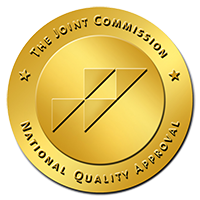
Can Type 2 Diabetes be Reversed?
“We’ve gotten fluffier as a nation,” registered dietitian and diabetes educator Charlene Dorcey told our group of nutrition professionals at a recent meeting. “And as we’ve gotten heavier, we also have more diabetes.”
Sadly, she is correct. Diabetes now affects almost 1 of every 10 people in the US. And the majority have type 2 diabetes, a condition associated with being overweight and inactive.
What’s scarier is the number of Americans with pre-diabetes—a condition that makes us 5 to 6 times more likely to get diabetes than the average person. As of 2017, the number of Americans with pre-diabetes was 84 million.
There is some good news, however. We know much more about how to prevent and treat diabetes than we ever did before. And while there is still no cure, several strategies can control type 2 diabetes or even put it into remission.
Number one, lose weight if you are overweight. If you have pre-diabetes, even a modest weight loss may keep you from developing full-blown type 2 diabetes.
If you already have diabetes, attack it as soon as you are diagnosed. Studies show that overweight people with type 2 who vigorously lose weight and increase their physical activity can prolong their body’s ability to manage blood sugars. In fact, regular physical activity is the most powerful anti-diabetes weapon we have.
We’ve also come a long way from how diabetes was treated a hundred years ago, said Dorcey. This was one protocol in 1917: “For 48 hours after admission to the hospital, keep the patient on an ordinary diet to determine the severity of his diabetes. Then starve him with no food allowed except black coffee and 1 ounce of whiskey every 2 hours. The whiskey is not an essential part of the treatment. It merely furnishes a few calories and keeps the patient more comfortable while he is being starved.”
Thankfully, nutrition therapy for diabetes is now more palatable and individualized. In fact, there is no longer just one “diabetic diet” since many approaches can work. Successful diets to treat diabetes do have these in common, however:
Rich in dietary fiber; that’s the substance found in vegetables, fruit, beans, whole grains and nuts.
Low in added sugar and refined grains (grains with little or no dietary fiber). Check the label.
Include healthful forms of fat, most notably omega-three (fish oils) and other polyunsaturated and monounsaturated types. Note: The Mediterranean-style of eating that includes fish, olive oil and other plant-based oils has been especially praised as an eating pattern to both improve diabetes control and take good care of our hearts.
Personalized by a registered dietitian with expertise in diabetes. Your local hospital is a good place to start.
Barbara Quinn is a registered dietitian nutritionist and diabetes educator at Box Butte General Hospital. She is the author of Quinn-Essential Nutrition: The Uncomplicated Science of Eating. Email her at bquinn@bbgh.org.


